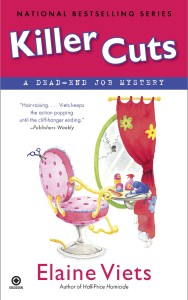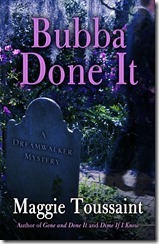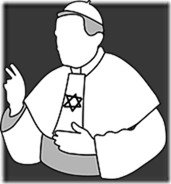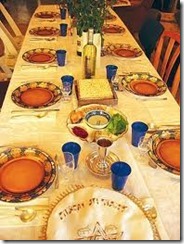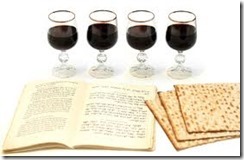
“The job of the artist is always to deepen the mystery.” —Francis Bacon
* * *
Kris Montee wrote a post last week about mystery novels and authors. Today, Dale Ivan Smith and I begin a two-part post on the first mystery novel, The Woman in White by Wilkie Collins. In this post, I’ll explore the background of the novel and give a summary of the plot. In his upcoming post, Dale will take a look at the characters in the book.
BACKGROUND
Wilkie Collins was born in England in 1824. His father was the well-known artist William Collins. Authors will be interested to know that it was Wilkie’s experience at Cole’s boarding school where he first found an incentive for telling stories. According to a Collins biography website:
It was here that he began his career as a storyteller to appease the dormitory bully, later recalling that ‘it was this brute who first awakened in me, his poor little victim, a power of which but for him I might never have been aware.’
Attorneys (and I know there are some that read these posts) will be interested to know Collins was a law student and was called to the bar in 1851. Although he never practiced law, his tendency to describe events in some of his books through the eyes of different characters, reminds one of witness testimonies.
Collins’ friendship with Charles Dickens began around 1850. The first of Collins’ four major novels, The Woman in White, was published in serial form in Dickens’ All the Year Round periodical from November 1859 to August 1860 and became a roaring success. Again, from the Collins biography website:
It was received with great popular acclaim and ran to seven editions in 1860, alone. All kinds of commodities such as cloaks, bonnets, perfumes were called after it; there were Woman in White Waltzes and Quadrilles; it was parodied in Punch; Gladstone found the story so absorbing that he missed a visit to the theatre; and Thackeray was engrossed from morning to sunset.
Perhaps the extraordinary popularity of the novel was why Collins left instructions for his tombstone to be inscribed with the words “In memory of Wilkie Collins, author of ‘The Woman in White’ and other works of fiction.”

A NEW GENRE
You would think the first effort at a new genre would be a clumsy one, but I didn’t find that when I read the book. Although it’s long (248K words according to howlongtoread.com), the story is captivating, and it is considered by many to be one of the best novels ever written. This from Wikipedia:
In 2003, Robert McCrum writing for The Observer listed The Woman in White number 23 in “the top 100 greatest novels of all time,” and the novel was listed at number 77 on the BBC’s survey The Big Read.
At its heart, TWIW is a love story. Boy meets girl, boy loses girl, boy gets girl back. But the story is wrapped within a mysterious “secret” that the main character pursues and it’s this that keeps the reader turning pages.
PLOT AND STRUCTURE
The book is divided into three “epochs” which are narrated by different characters.
In Epoch One, Collins immediately employs The Hook. The protagonist, a young art instructor by the name of Walter Hartright, is approached while alone on a dark road by a mysterious woman in distress who is dressed all in white.
The woman, Anne Catherick, asks for directions, and Hartright helps her find a cab to take her to her destination. In the next few paragraphs, Hartright witnesses a man in a carriage tell a policeman that a woman escaped from his asylum. She was dressed all in white! Now the reader is hooked for sure.
Hartright continues to his new position at Limmeridge House where he meets his students, half-sisters Marian Halcombe and Laura Fairlie. They live in the estate home of Laura’s uncle and guardian, the hilarious curmudgeon, Mr. Fairlie. Hartright notices Laura bears a striking resemblance to the woman in white, and he tells them the story of his meeting with Anne Catherick.
Walter and Laura fall in love, but Laura, who will receive a large sum of money upon marriage, is engaged to be married to Sir Percival Glyde, a man she does not love. Hartright is forced into a heartbreaking withdrawal.
When Glyde arrives at the estate prior to the marriage, he seems genial enough, but there’s something edgy and uncomfortable about him. The young women discover he was responsible for committing Anne Catherick to a mental institution.
Percival Glyde and Laura Fairlie marry, and it soon becomes apparent that he wants her to sign over her inheritance to him. Tension builds between Laura and Percival. The stakes are further raised when Anne Catherick appears again and indicates she has a secret about Percival Glyde that will destroy him, but she doesn’t reveal it.
By the time Walter Hartright reenters the story, he is told Laura is dead and Anne Catherick has been sent back to a mental institution. Marian Halcombe is convinced foul play was involved in Laura’s death, and she and Hartright begin an amateur sleuth investigation into the situation. They are especially interested in the “secret” Anne Catherick had. They track Anne to an asylum where they make a shocking discovery.
I’ll stop there so I don’t give away the ending.
* * *
I mentioned several of the major characters above, but there are ten characters that offer first person accounts at different points in the story. Although we sometimes think we need to limit the number of POV characters, I think the “witness” narratives are effective here. In my opinion, having the story emerge through the eyes of various characters is an effective way to put the puzzle together one piece at a time until the reader finally gets to see the whole picture.
* * *
There are several movies of The Woman in White. The one we have is the Masterpiece Theatre version, and I recommend it. The acting is very good. Although the movie changes some of the story and shortens it considerably, it’s a great introduction to TWIW.
* * *
So TKZers: Have you read The Woman in White or seen any of the various movies? What are your thoughts? Have you used the method of telling a story through the eyes of different characters? What’s your favorite mystery novel?
 Cassie Deakin investigates a forty-year-old murder mystery and comes face-to-face with a killer who will stop at nothing to keep his secret.
Cassie Deakin investigates a forty-year-old murder mystery and comes face-to-face with a killer who will stop at nothing to keep his secret.
Available at Amazon, Barnes & Noble, Kobo, Google Play, or Apple Books.






